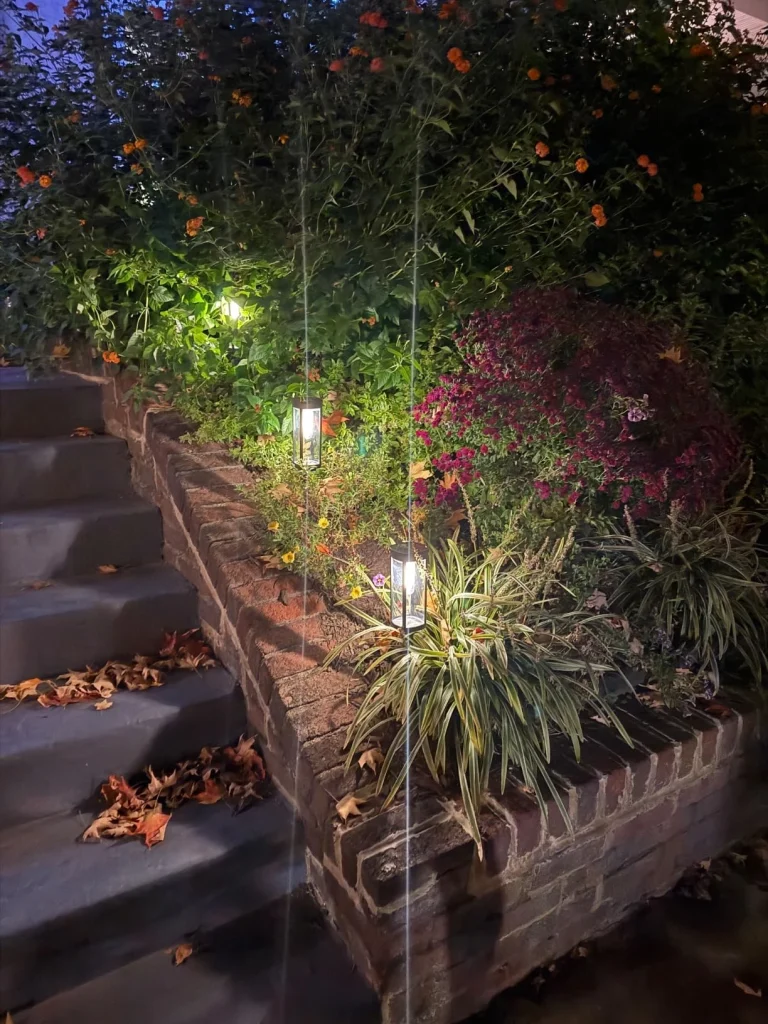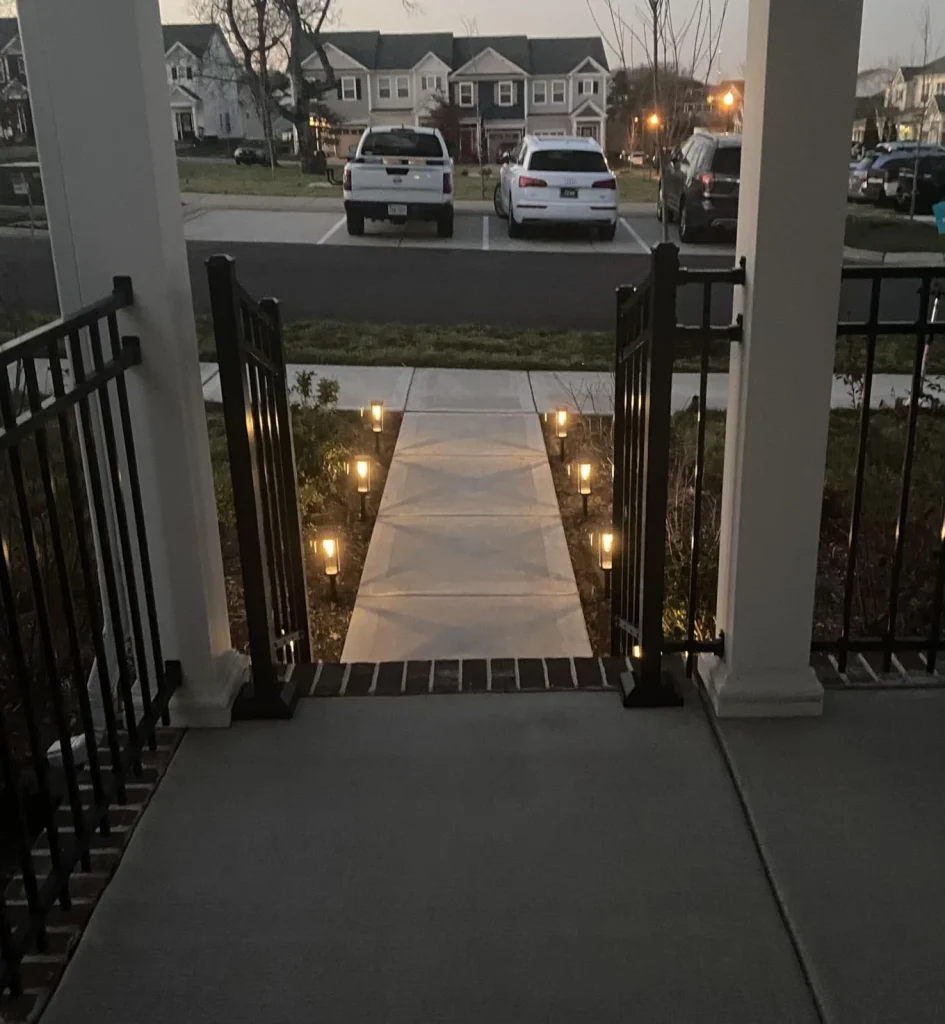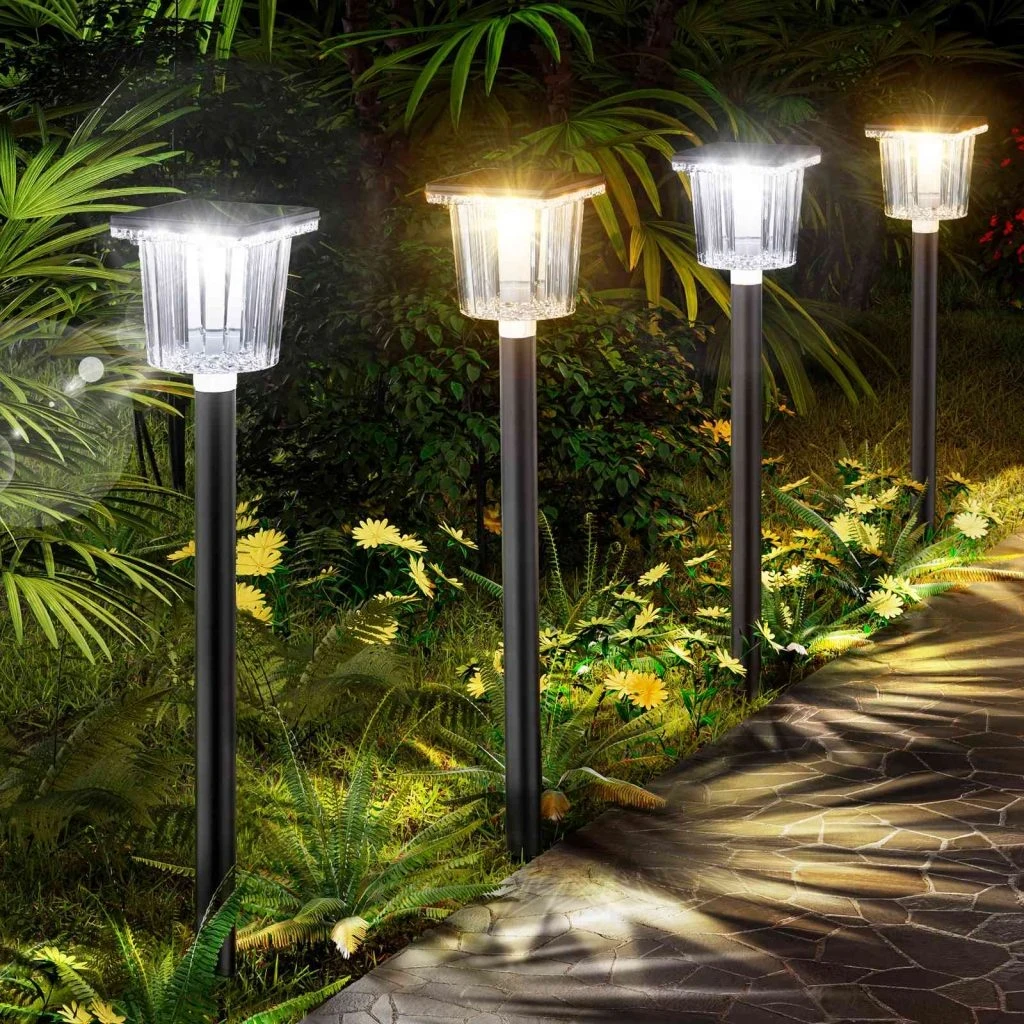Harnessing solar energy, outdoor lights with solar panels provide an eco-friendly way to illuminate gardens, pathways, and patios. These systems combine practicality with sustainability, offering homeowners a low-maintenance, cost-effective lighting solution. This guide delves into optimizing solar panel angles, ensuring weather resistance, choosing installation layouts, managing energy storage, and maintaining panels for long-term performance.

Optimizing Solar Panel Angles for Maximum Efficiency
The angle of a solar panel significantly impacts the performance of outdoor lights with solar panels. Proper tilt ensures maximum sunlight capture, especially in regions with varying sun paths due to latitude. For instance, in northern areas like those around Minneapolis, Minnesota, a steeper angle of 40-45 degrees is ideal during winter months to capture low-angle sunlight. In contrast, southern regions like Miami, Florida, benefit from a shallower tilt of 15-20 degrees to align with the sun’s higher trajectory.
Seasonal adjustments enhance efficiency. Adjustable mounts allow homeowners to tweak panel angles quarterly. In a Seattle, Washington, backyard, a homeowner used a tiltable solar panel mount for their outdoor light with solar panel, increasing energy capture by 20% during cloudy winter months. Online tools or apps can calculate precise angles based on local latitude and seasonal sun positions, ensuring optimal charging. Fixed installations should aim for an angle equal to the latitude for year-round balance, minimizing manual adjustments while maintaining consistent performance.
Panel orientation also matters. South-facing panels (in the Northern Hemisphere) maximize exposure, but slight deviations can still yield good results in less-than-ideal setups. By prioritizing angle and orientation, outdoor lights with solar panels achieve reliable illumination even in challenging conditions.
Weatherproofing: Protecting Panels from the Elements
Durability is critical for outdoor lights with solar panels, which face constant exposure to weather. Solar panels must resist ultraviolet (UV) degradation and water ingress to maintain efficiency. High-quality panels use tempered glass with anti-UV coatings to prevent yellowing or cracking over time. In coastal areas like Savannah, Georgia, where humidity and salt air accelerate wear, panels with robust coatings lasted 30% longer than untreated alternatives in local installations.
Edge sealing is equally important. Waterproof seals, often made of silicone or EPDM rubber, prevent moisture from infiltrating panel edges, protecting internal circuits. In a Denver, Colorado, garden, a homeowner reported that outdoor lights with solar panels featuring IP65-rated seals withstood heavy snow and rain without performance loss. Regular inspection of seals ensures no cracks or gaps develop, especially after extreme weather events like hailstorms.
For added protection, some panels include anti-reflective coatings that reduce glare while enhancing light absorption. These features ensure that outdoor lights with solar panels remain functional in harsh conditions, from scorching summers in Phoenix, Arizona, to freezing winters in Chicago, Illinois, delivering consistent illumination year-round.
Installation Layouts: Integrated vs. Separated Designs
Choosing between integrated and separated designs for outdoor lights with solar panels depends on the landscape and lighting needs. Integrated units, where the panel and light are a single unit, are ideal for compact spaces like small patios or pathways. Their all-in-one design simplifies setup, requiring only a stake or mount. In a suburban backyard in Charlotte, North Carolina, integrated solar lights lined a walkway, providing hassle-free installation and a sleek aesthetic.
Separated designs, where the panel and light are connected by a cable, offer flexibility for larger or shaded areas. The panel can be placed in a sunny spot, while the light illuminates a shaded area, such as under a tree canopy. In a Portland, Oregon, garden, a homeowner mounted a solar panel on a sunny fence while directing the connected outdoor light with solar panel to a shaded pergola, ensuring optimal charging and illumination. Cables should be buried shallowly or concealed under mulch to maintain a tidy appearance.
Consider site-specific factors when choosing. Integrated units suit open, sunny areas but may underperform in shade. Separated designs require more planning but excel in complex layouts. Testing light placement before final installation ensures the outdoor light with solar panel meets both aesthetic and functional goals.
Energy Storage: Dynamic Battery Management
Effective energy storage is vital for outdoor lights with solar panels, especially in low-light conditions. Batteries, typically lithium-ion or NiMH, store energy during the day for nighttime use. Lithium-ion batteries offer higher capacity and longer lifespans (3-5 years) compared to NiMH (1-2 years). Advanced systems include charge controllers to prevent overcharging or deep discharging, which can degrade batteries.

In cloudy regions like Seattle, Washington, outdoor lights with solar panels with dynamic charge management extend runtime by prioritizing essential functions. For example, dimming non-critical lights during low battery levels conserves energy. A homeowner in Tucson, Arizona, used lights with adaptive settings to maintain illumination during monsoon season, when cloud cover reduced charging efficiency.
Smart features, like dusk-to-dawn sensors, optimize energy use by activating lights only when needed. Some outdoor lights with solar panels offer programmable modes, allowing users to set brightness levels or timers via remotes or apps. In a Minneapolis, Minnesota, backyard, a homeowner configured solar lights to dim after midnight, extending battery life while maintaining security. These settings ensure reliable performance, even during extended cloudy periods.
Maintenance: Keeping Panels Clean and Efficient
Regular maintenance ensures outdoor lights with solar panels operate at peak efficiency. Dust, pollen, and bird droppings are common culprits that reduce panel performance by blocking sunlight. In arid regions like Albuquerque, New Mexico, dust accumulation on panels reduced charging efficiency by up to 15% in tests. Gentle cleaning with a soft cloth and water removes dust without scratching the surface. Avoid abrasive materials or harsh chemicals, which can damage anti-UV coatings.
Bird droppings, prevalent in areas with heavy bird activity like coastal Miami, Florida, require targeted cleaning. A mixture of water and mild dish soap, applied with a soft sponge, effectively removes sticky residues. For stubborn stains, a diluted vinegar solution can break down organic matter without harming the panel. A homeowner in Austin, Texas, reported that bi-monthly cleaning of their outdoor light with solar panel restored full charging capacity after bird droppings had dimmed output.
Seasonal maintenance is key. In fall, clear fallen leaves from panels, especially in wooded areas like Asheville, North Carolina. In winter, remove snow promptly to prevent shading. Scheduling cleaning every 2-3 months, or after major weather events, ensures outdoor lights with solar panels maintain consistent performance and longevity.
Conclusion
Outdoor lights with solar panels offer a sustainable, versatile solution for illuminating outdoor spaces. By optimizing panel angles, ensuring weatherproofing, choosing the right installation layout, managing energy storage, and maintaining panels, homeowners can create stunning, eco-friendly landscapes. Whether lighting a cozy patio or a sprawling garden, these systems deliver reliable, low-maintenance illumination that enhances both beauty and functionality.


Leave a Reply